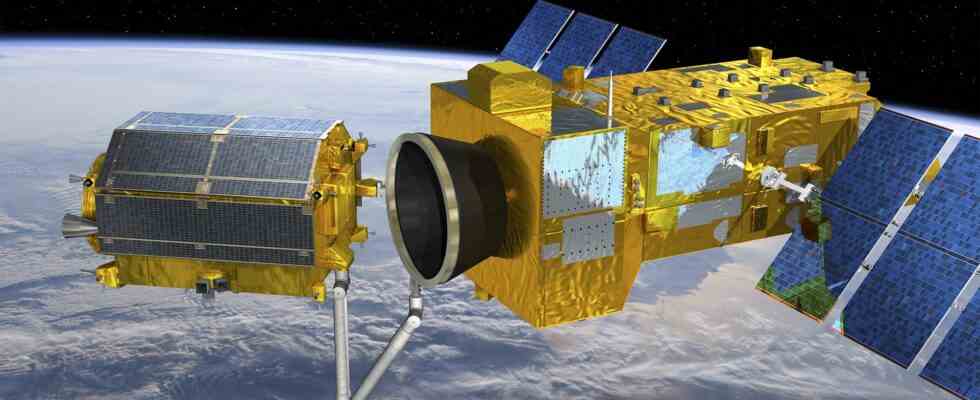Status: 01/10/2023 10:33 a.m
Thousands of satellites orbit the earth for surveillance, research and communication. Space debris puts the system at risk. The ESA wants to have the garbage removed with the help of start-ups.
the The European space agency ESA has set itself the goal of creating more order in orbit. More and more obsolete satellites are clogging up orbit, threatening new satellites needed for cell phone reception, navigation systems, research, surveillance and communications. ESA wants to solve the problem with the help of start-up companies that can clean up the satellite debris. This could be a lucrative business area for companies.
Robots with gripper arms
Together with the Swiss start-up company Clearspace, ESA is planning to send a robot into orbit that will use its gripping arms to remove debris and defective satellites. Clearspace-1 is scheduled to launch in 2025 for the first clean-up operation. “The market is still in its infancy, but we need to stimulate it,” Holger Krag, head of ESA’s space security program, told the news agency dpa. The agency is investing more than 100 million euros in the project. Private investors are also involved in the mission.
There are currently more than 35,000 missiles in space that are larger than ten centimetres. 130 million parts are smaller than a centimeter. “As with all environmental problems, you have to prevent garbage first before you can clean it up. Are we good at prevention? No,” says Krag.
Therefore, a clean-up action is necessary. It is planned that the waste will burn up when it enters the earth’s atmosphere. In the future, garbage should be prevented immediately, says the expert. “We demand that from 2030 the object must disappear at the end of every mission.”
expensive project
“Of course we need several providers. This creates a competitive landscape,” said Krag. The project is still expensive. “Of course, space travel is expensive. A clearing mission is also very expensive, especially the first one,” said the expert. The focus in this area is on the development of routine. “But the costs will definitely remain in the millions.”
Manuel Metz from the German Aerospace Center also sees a future business model in clean-up missions. “The idea is very clear: there should be a perspective to implement commercial services and applications with it.”
Robots that fish the trash out of orbit aren’t enough on their own, Metz said. Rather, there must be an interaction of different technologies. Some satellites are already being equipped with specific handles to make it easier to remove the missiles later. According to Metz, observation technologies are also important in order to locate the objects precisely.
Start-up wants to collect real-time data
The Hessian start-up Vyoma, for example, is pursuing such a monitoring strategy. The company wants to use its own satellites to collect real-time data and locate space debris. There are many satellites in earth orbit that have to make evasive maneuvers because some of the data is up to 48 hours old, reports co-founder Stefan Frey. Real-time data improved the forecast of possible collisions with space debris and enabled active removal. For example, the data provides information on whether and how fast an object is rotating.
However, data collection does not come cheap. “For ground-based sensors, the price ranges from $2,500 to $90,000 per month for constant monitoring of one object,” says Frey. The start-up does not want to limit itself to one object, but rather monitor several, which makes the price cheaper. The monitoring of an object should cost a few hundred euros a month.
The first of the two Vyoma satellites is scheduled for launch in 2024. After a mission, the satellites are to be put into a certain orbit in order to come down and burn up in the Earth’s atmosphere.

